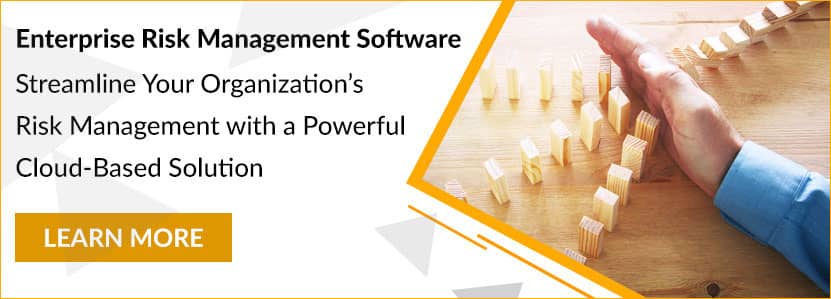Home/ Blog / Creating Future Friendly Risk Technology
One of the most fascinating things to see is how the design of solutions and products has evolved over time as customer experience and insights are continuously incorporated into core designs. There is a march towards technological progress always, where new technologies and techniques make new things possible.
Risk technology is a great example of this evolution. Risk technology has advanced exponentially in the past two decades. Modern risk technology is much more capable and easier to use than the older solutions. While a lot of the changes were made possible through the advent of new technologies, such as A.I. and Natural Language Processing, many of the changes were also made possible by the changing form of risk management solutions.
Legacy Risk Management Systems
Legacy risk management solutions were notoriously difficult to use. The problem wasn’t their functionality – the tools included in those solutions were useful – the problem was that the solutions required a lot of customization and training to use.
The solutions also required local infrastructure and were expensive to maintain. They were only used to manage risks in the biggest organizations in the country – other businesses simply could not afford a solution due to expenses required to implement and maintain. Thankfully, software developers listened to the feedback from the users and went back to the drawing board to come up with a better architecture for risk management solutions.

Current Risk Management Systems – The Cloud Era
The cloud model has proven to be the right one for risk management systems and enables businesses to access cutting-edge risk technology affordably. All the pain points present in the previous era have been removed by reimagining risk management platforms under the SaaS model. Gone were the extensive and expensive implementation periods – the cloud solutions could be easily set up without requiring any on-premises hardware additions.
Another important change is the focus on intuitive user interfaces. Modern risk management platforms provide UI elements that are very similar to the UI elements present in software solutions that risk managers and general office workers are already used to. This means that businesses now need minimal training to be able to use the risk management solution to manage risks.
The Future – Modularity
The internet of the future is built on choice. Customers do not want to be locked in – they want to be free to make the best possible decision for their organizations. This was impossible in the legacy era – businesses paid millions of dollars for the implementation and procurement of the solution which was installed on-premises. They had to use the solution for the next few years if they wanted to receive any ROI from the implementation. The cloud model has made it easier for businesses to quickly select point solutions, GRCs, or both as their risk needs evolve.
Modern risk management platforms provide UI elements that are very similar to the UI elements present in software solutions that risk managers and general office workers are already used to. Share on XForward-thinking solution providers are now looking at the next step, and many solutions are already being built in a modular way. The aim is to allow the customer to use the parts of the solution that they need. There are many advantages to this approach. The most obvious one is that the customers save money by only getting the tools and features they want. Customers are also more satisfied with this approach – since the solution is deployed selectively, there is no bloat. This ensures that the risk management platform works efficiently without slowing down due to workloads.
Some vendors are taking the next step and making it possible to use parts of their risk and compliance management solutions with the risk and compliance management solutions made by other vendors. This would enable the best possible experience for customers; instead of having to select between different solution providers, the customer can choose their preferred solutions from different vendors and have them work together.
Predict360’s Risk Insights module is a great example of such a solution. It can be used as a standalone tool to predict risks. It can also be used as an integrated module within the Predict360 Risk and Compliance Intelligence platform, where it uses the additional data from other modules to provide even better risk predictions and insights. Risk Insights includes predictive functionality which many other risk management solutions lack; it can also be used in tandem with solutions from other vendors to ensure that users do not miss out on important risk trends, predictions, and insights.
Interested in seeing how Predict360’s modules can help your organization? Get in touch with our risk and compliance experts for a demonstration.
Request a Demo
Complete the form below and our business team will be in touch to schedule a product demo.
By clicking ‘SUBMIT’ you agree to our Privacy Policy.




